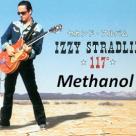North Dakota Bakken crude production continues to grow at record rates with nearly 770 Mb/d produced in December 2012 up 40 percent since January 2012. The North Dakota Pipeline Authority estimates that 64 percent of that crude was transported to market by rail in December. After local refinery consumption (80 Mb/d) that means 440 Mb/d moving by rail. Today we continue our survey of North Dakota crude rail loading terminals with an in-depth look at three midstream companies that between them can potentialy load 280 Mb/d of crude in North Dakota.
Daily Energy Blog
The Deepwater Horizon explosion in April 2010 effectively halted new drilling in the offshore Gulf of Mexico (GOM). Between April 2010 and June 2012 production fell by 400 Mb/d. At the same time the shale revolution led to increases in US production – up 790 Mb/d during 2012 – the largest annual increase on record. In the last quarter of 2012 GOM oil production began to recover and is forecast to increase to 1.5 MMb/d by the end of 2014. Today we look at the impact Macondo had on GOM crude production.
Last week (Feb 19, 2013) we explored California’s cap-and-trade program for Greenhouse Gas emissions (GHG) and saw that it has already increased electricity prices by 20% and pushed up the cost of refining a barrel of oil by $0.78/bbl. These developments are just the tip of the iceberg. California’s program will impact regional natural gas demand and basis. Companies will shift the locations where crude oil is processed. Power imports into the California market from the Pacific Northwest will soar. Today we’ll dive even deeper into the emissions market to better understand the outlook for GHG pricing and how the cap-and-trade rules are likely to influence all sorts of energy and fuel markets.
The latest crude production estimates from North Dakota show continued growth to a new record of nearly 770 Mb/d in December 2012. The North Dakota Pipeline Authority estimates that 64 percent of that crude was transported to market by rail in December – up from 58 percent in November. Today we continue our survey of North Dakota crude rail loading terminals with an in-depth look at three facilities that between them can load 250 Mb/d of crude.
Last week (February 2013) EOG Resources told analysts that most Eagle Ford oil production should be classified as condensate rather than crude oil. They backed up their assertion with a chart of production quantity and API quality indicating 70 percent of production is condensate. Current forecasts indicate that translates to condensate production of over 500Mb/d in South Texas during 2013. Today we examine the evidence that EOG presented.
Last week we held the first RBN School of Energy at the St. Regis hotel in Houston. Based on the feedback we received it was a huge success, achieving the goals we laid out for the conference. Today we’ll report on the conference itself, and review some of the most important points covered in the curriculum. Warning, this blog could (and should) be considered an advertorial, so read at your own risk.
On January 1st, 2013, California’s cap-and-trade program for Greenhouse Gas emissions (GHG) went live and West Coast energy markets entered a whole new world. Wholesale electricity prices in California increased 20% as a result and other energy markets have felt the impact. For example, the new rules pushed up the average cost of refining oil by $0.78/bbl. For companies subject to the regulations, the bottom line is that if you generate GHG, you pay. But exactly who pays, how much you pay, and when you pay are all subject to a dizzying array of rules and regulations. Today we’ll navigate the turbulent and uncharted seas of California cap-and-trade markets.
Alkylate is a valuable blending component that accounts for about 12 percent of the US gasoline pool. Alkylate is manufactured by combining elements derived from NGLs and crude oil refining and is an important link between these two hydrocarbon markets. Alkylate has critical qualities required to meet complex modern gasoline quality specifications. Today we look at the qualities and manufacture of alkylate.
Total crude oil shipped out from the South Texas Port of Corpus Christi increased 19 fold between November 2011 and November 2012 from 2.1 MMBbl to 36 MMBbl. All of that crude is coming from the Eagle Ford shale oil basin 70 miles north of Corpus in the form of light crude or condensate via pipeline. Six marine terminals have been built or expanded at Corpus but can they handle the traffic jam? Today we review how the Port is coping.
Canada imports as much as 2 Bcf/d of natural gas from the US in the region around the Dawn trading hub. The Dawn system has traditionally been fed by Western Canadian supplies and long haul pipelines from the US Gulf, Midwest and the Rockies. Marcellus gas can already reach Dawn via the border crossing at Niagara to the East. The Nexus Gas Transmission project will bring 1 Bcf/d directly into Dawn from the Utica. Today we detail the changing flows.
In the space of just over one year North Dakota crude rail takeaway capacity has reached close to 1 MMBb/d. According to the North Dakota Pipeline Authority 58 percent of October 2012 Williston Basin production of over 800 Mb/d was transported out of North Dakota by rail. There are now 18 crude loading terminals operating in North Dakota on the BNSF and Canadian Pacific (CP) railroads. Today we continue our series on crude by rail with a North Dakota terminal inventory.
Could the construction of new production capacity for one chemical product result in a 1.4 Bcf/d increase in natural gas demand? Yes it could - if all the methanol plants that have been announced and are on the drawing board get built. Of course, it is pretty unlikely that they will all get built, but even if only the best projects are completed, they will still consume a lot of gas. Today we’ll lay out the new plant construction numbers.
Last Thursday (January 31, 2013) a high frequency trading event about 400 milliseconds before the scheduled EIA Storage data release set off a frenzy of selling in the NYMEX Natural Gas futures market. Some analysts believe that the storage report could have been leaked. Others blamed computer timing issues. These events resurrected ghosts of EIA storage numbers past and inspired our examination of these developments in the context of the evolution of high frequency trading in energy markets.
U.S. gas plant production of propane is up 25% since early 2011, far above growing volumes of ethane, held to only an 8% rise by rejection economics. As propane supplies have surged, prices have come down hard…. But not nearly as hard as would have been the case if it were not for rapidly increasing exports. And where are all these barrels going? That’s right. In a conga line of ships headed to Latin America where the growth in imports from the U.S. into some countries has been off the scale. Which countries are taking all this propane? How long can this go on? How much dock capacity does the U.S. need? What could derail this development? Today we begin a blog series to explore these questions.
The US energy midstream sector will remember 2012 as the “Year of the Tank Car”. Venerable pipeline companies were reduced to investing in rail terminals. Although reluctant at first, coastal refiners embraced the margin boost that crude by rail provides them. Producers signed up to move landlocked crudes by rail to coastal destinations in search of higher prices. Petroleum shipments increased 46 percent from 370 M carloads in 2011 to 540 M carloads in 2012. Rail car manufacturers struggled to meet an order book of 40,000 rail cars and the backlog for new delivery is 18 months. Today we begin a crude by rail series.




